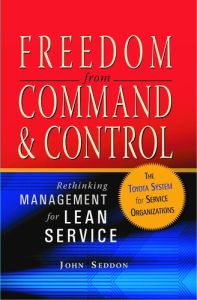Join getAbstract to access the summary!

Join getAbstract to access the summary!
John Seddon
Freedom from Command & Control
Rethinking Management for Lean Service
Productivity Press, 2005
What's inside?
You can't run your service firm like a factory, but you can manage it as an employee-driven customer service system.
Recommendation
This brief book offers a lot in a small package. Although the customer-driven systems management strategy that John Seddon outlines is hardly new, he offers a fresh discussion about applying it to service organizations. Although this management tactic has proven itself indisputably, many managers and most organizations will find it radical. The author clearly, concisely illustrates its merits with numerous examples from a range of industries, with particular reference to the successful Toyota Production System. However, Seddon is frank about the kind and degree of opposition that reform will encounter. He also debunks other management systems in light of this approach. getAbstract highly recommends this book to all managers with the note that you can only implement its findings if you enjoy the full support of top management.
Summary
About the Author
John Seddon is an occupational psychologist. He is also the author of I Want You to Cheat and In Pursuit of Quality: The Case Against ISO 9000. He is managing director of an organizational change consultancy and visiting professor at Cardiff University.
















Comment on this summary